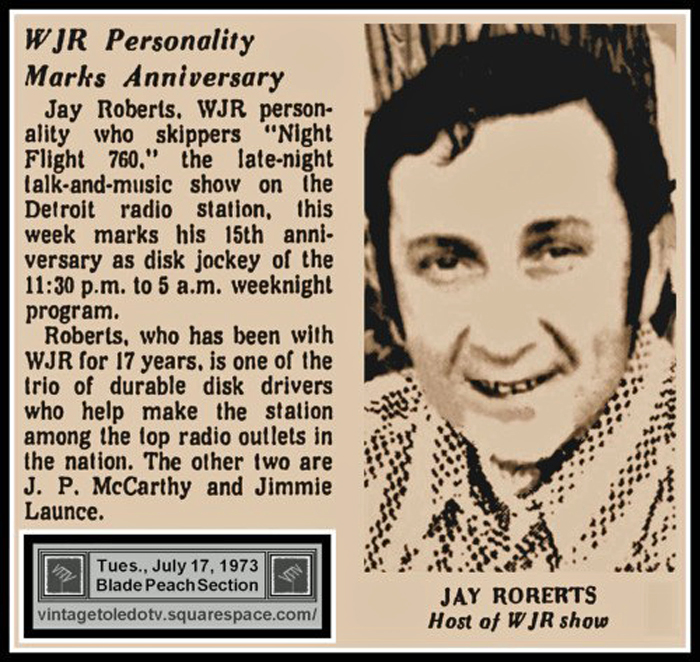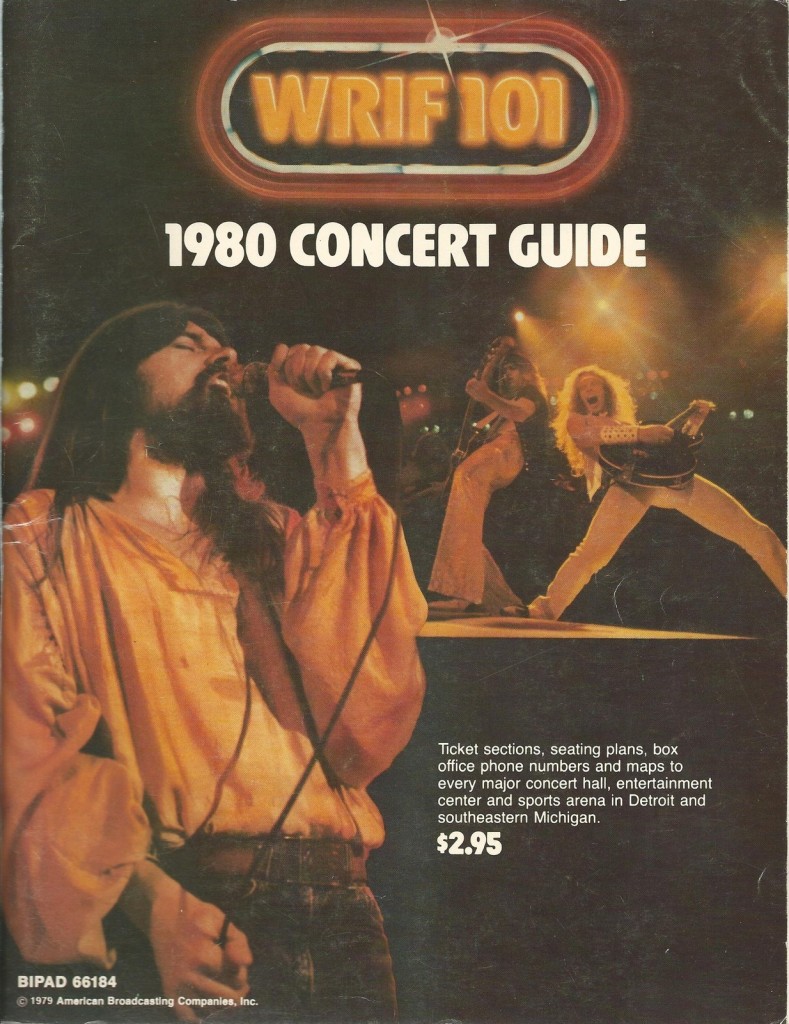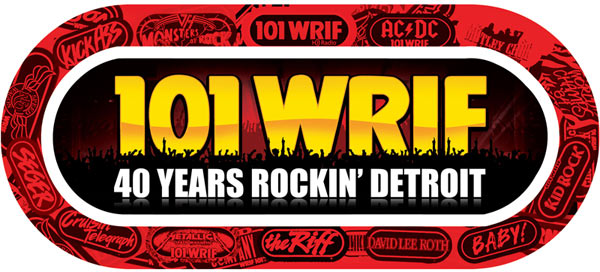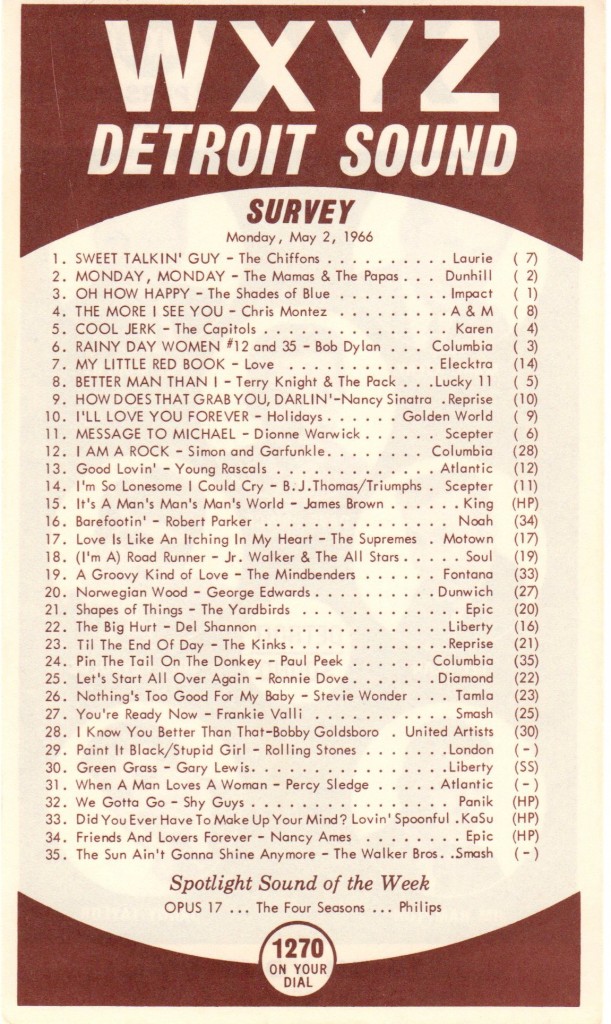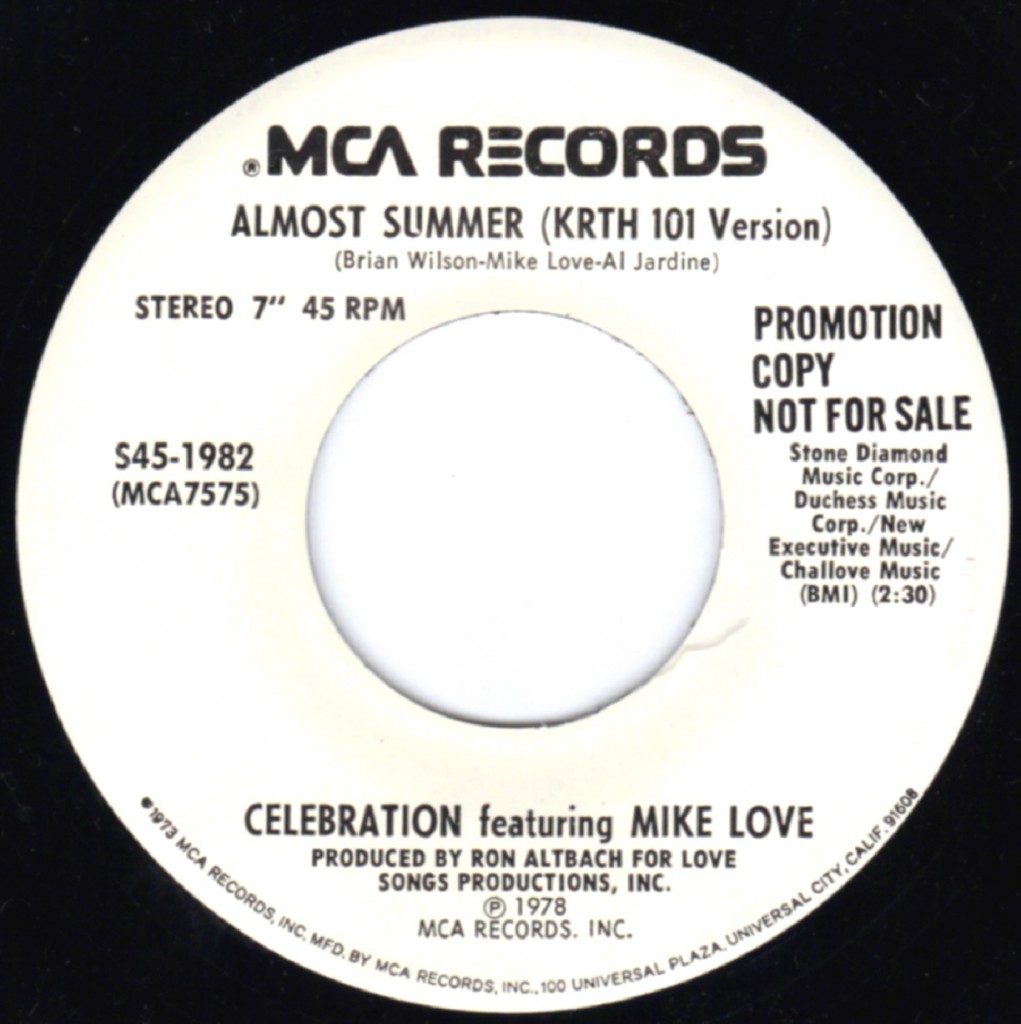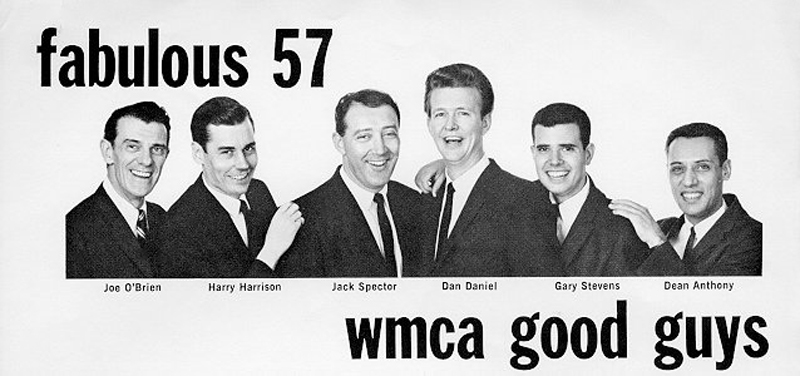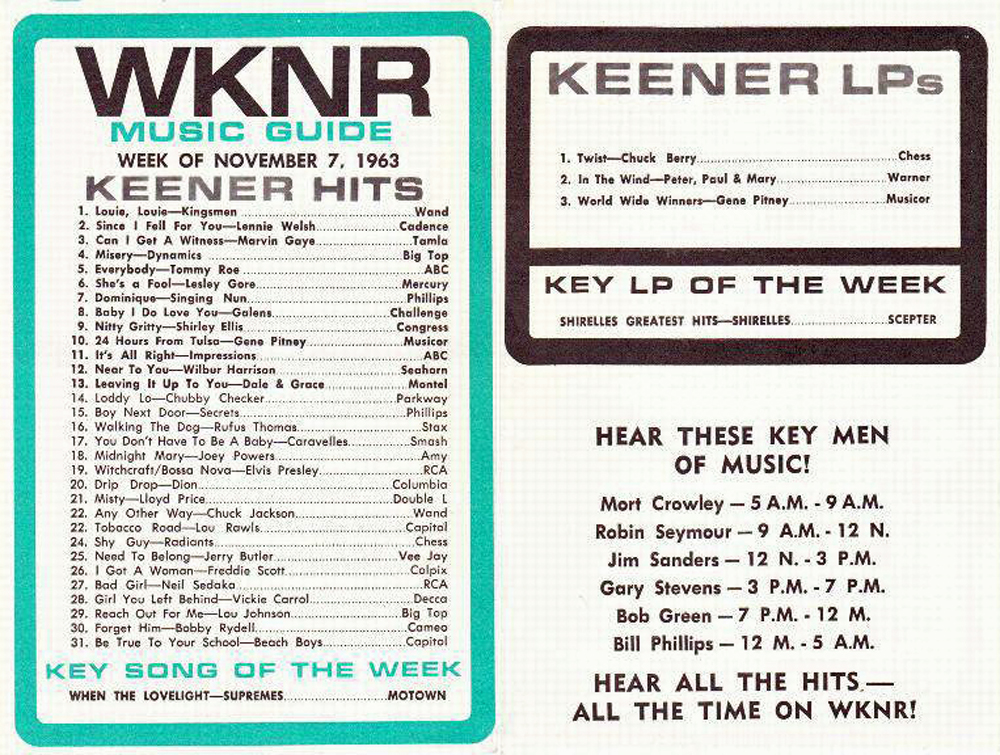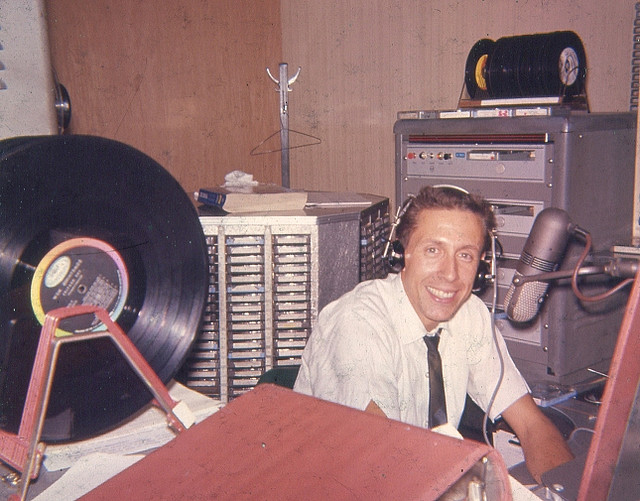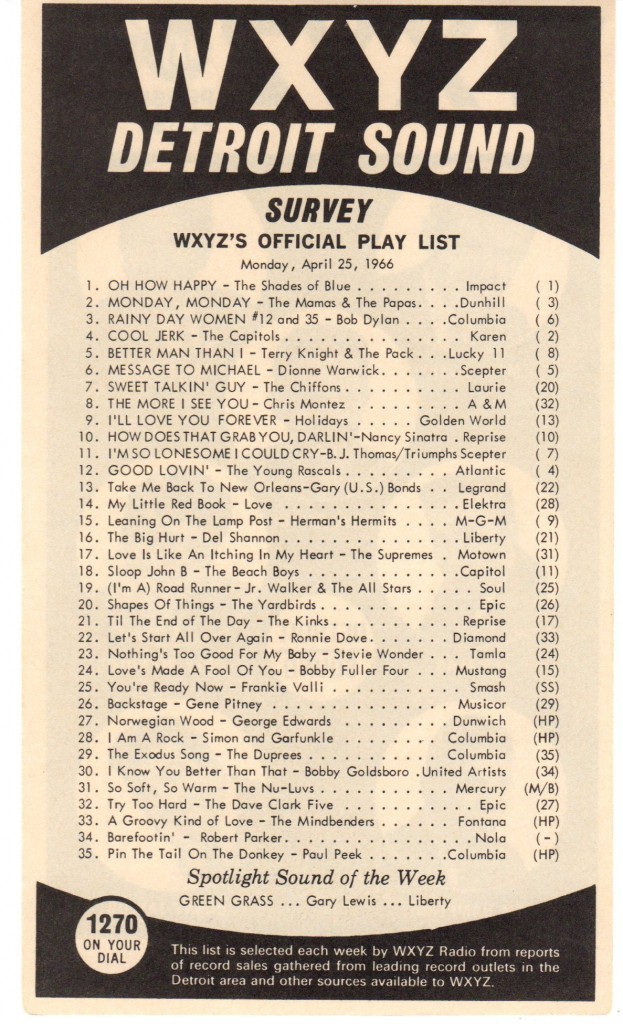![]()
WJR’S OWN JAY ROBERTS LENDS OUT FORMAT . . . MARCH 2, 1963
Billboard Magazine; March 2, 1963

DETROIT — Deejays are competitive, but they can also be cooperative.
While recuperating from a knee twist which had him away from the WJR studio turntables for about a week, midnight record-spinner Jay Roberts received a note from station owner Jon Holiday, of WAIR (Winston-Salem) asking permission to use the basic format of Roberts’ “Nightflight 760.”
Roberts simulates a jet flight to a different city every night, beginning with a whooshing takeoff sound effect and a (pre-recorded) airline hostesses’ voice issuing a welcome and instructions just as though it was a real flight. During the flight, “Captain” Roberts describes the city of the night in detail.
Roberts told Holiday, a former top jazz deejay from Little Rock, Arkansas to go ahead. END
___
(Information and news source: Billboard; March 2, 1963)
![]()
LOOK WHAT WE FOUND! ‘RIF DREW AND MIKE W/ JOHN BOBBITT * 1994
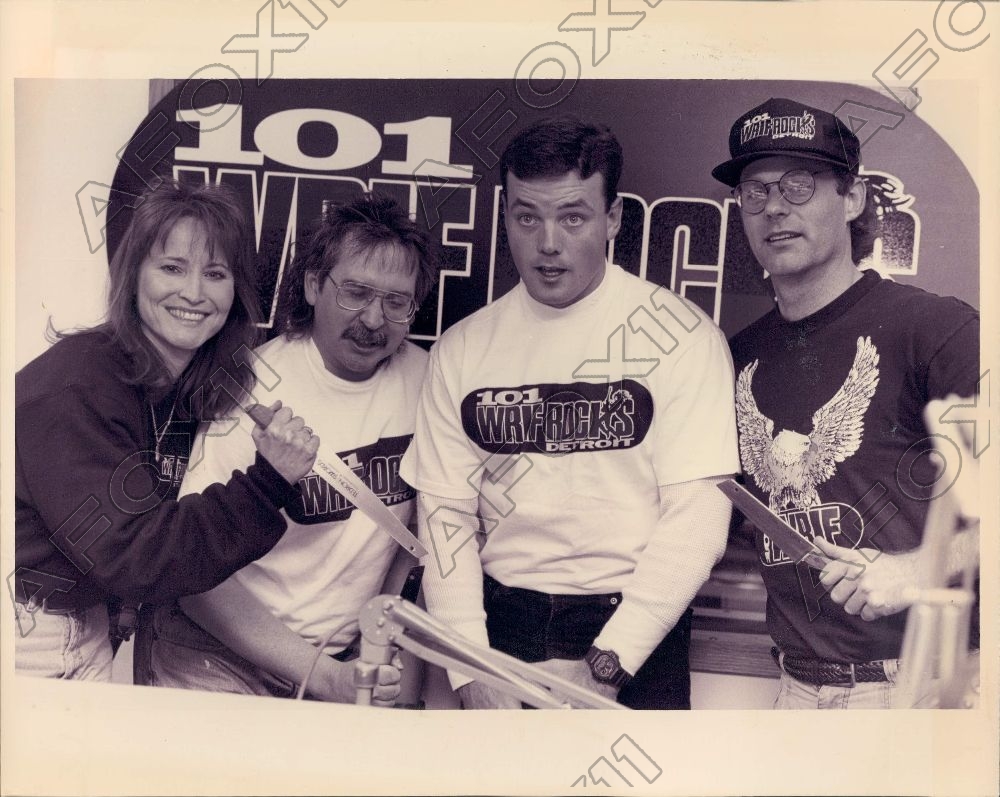
UPDATE! May 9, 2013: Today comes word Drew and Mike reportedly has been fired from WRIF-FM 101 after a 22-year run with that station. For more on the story go here.
![]()
WRIF-FM 101 * SEGER * CONCERT SERIES GUIDE * 1980
WXYZ-AM 1270 * THE DETROIT SOUND SURVEY * MAY 2, 1966
THE TOP 35 HITS ON WXYZ ON THIS DATE IN 1966
WXYZ 1270 Detroit Sound Survey; No. 03 issued May 2, 1966 under Lee Alan, Program Director; WXYZ
(WXYZ 1270 Detroit Sound Survey for May 2, this date 1966; survey courtesy the Jim Heddle Collection. For the previous weekly WXYZ April 25, 1966 survey click here).
![]()
WANTED: CELEBRATION “ALMOST SUMMER” 45 SINGLE (CKLW VERSION)
WANTED: CELEBRATION “ALMOST SUMMER” featuring MIKE LOVE (CKLW Version) Single 45
We are searching for the 1978 CKLW Version of this special Detroit themed (click here for audio) 45 single for a future project. Any information regarding this record, whether it may still exists somewhere out there and whether the 45 vinyl source can be available for purchase (or even a 132-bit kbps mp3 audio [stereo?] download from the vinyl source) please write to jim@mcrfb.com
We know there were at least three radio versions of “ALMOST SUMMER” which were specially recorded by CELEBRATION for these major markets in 1978: Los Angeles (KRTH), Detroit (CKLW) and New York (99X).
The above record photo is the L.A. radio KRTH 101 version. Any help or information locating “Almost Summer” (the CKLW Version) on vinyl would be appreciated.
![]()
BEATLES’ ‘HELP!’ PRESSED FOR 1,000,000 MARK . . . AUGUST 14, 1965
From the MCRFB NEWS archive: 1965
ANTICIPATED NEW RELEASE GETS INITIAL PRESSING OF MILLION
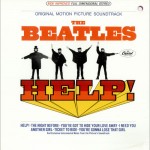 NEW YORK — An initial pressing of 1 million albums, reportedly the largest single order in the history of the business, is in the works for “Help!” the Beatles album scheduled to be released by Capitol Records when the United Artists film of the same name opens Wednesday (August 11).
NEW YORK — An initial pressing of 1 million albums, reportedly the largest single order in the history of the business, is in the works for “Help!” the Beatles album scheduled to be released by Capitol Records when the United Artists film of the same name opens Wednesday (August 11).
A previous Beatles album, “Beatles VI,” had an initial pressing order of 500,000 albums slated for its scheduled release.
The film will be accompanied by a publicity barrage calculated to blast the American public out of its homes and into the movies houses across the country.
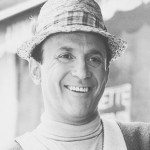
In New York, Murray the K will introduce the British group on his hour-long Channel TV show on Saturday, August 14. The show will be televised in 40 major markets.
The evening after the telecast, the Beatles made their much-heralded appearance in New York’s Shea Stadium.
Gary Stevens (formerly WKNR-AM Detroit) WMCA disk jockey, is conducting a “Beatles Stakes” contest, with tickets to the Shea Stadium concert as prizes. Here’s how it works:
From 7 to 11 p.m., during the Gary Stevens Show, fans telephone WMCA and tell Stevens by guessing which Beatle will be talking to them next. Those lucky enough to make the correct guess answered will get a pair of tickets to the Shea concert, Sunday evening, August 15. END
___
(Information and news source: Billboard; August 14, 1965)
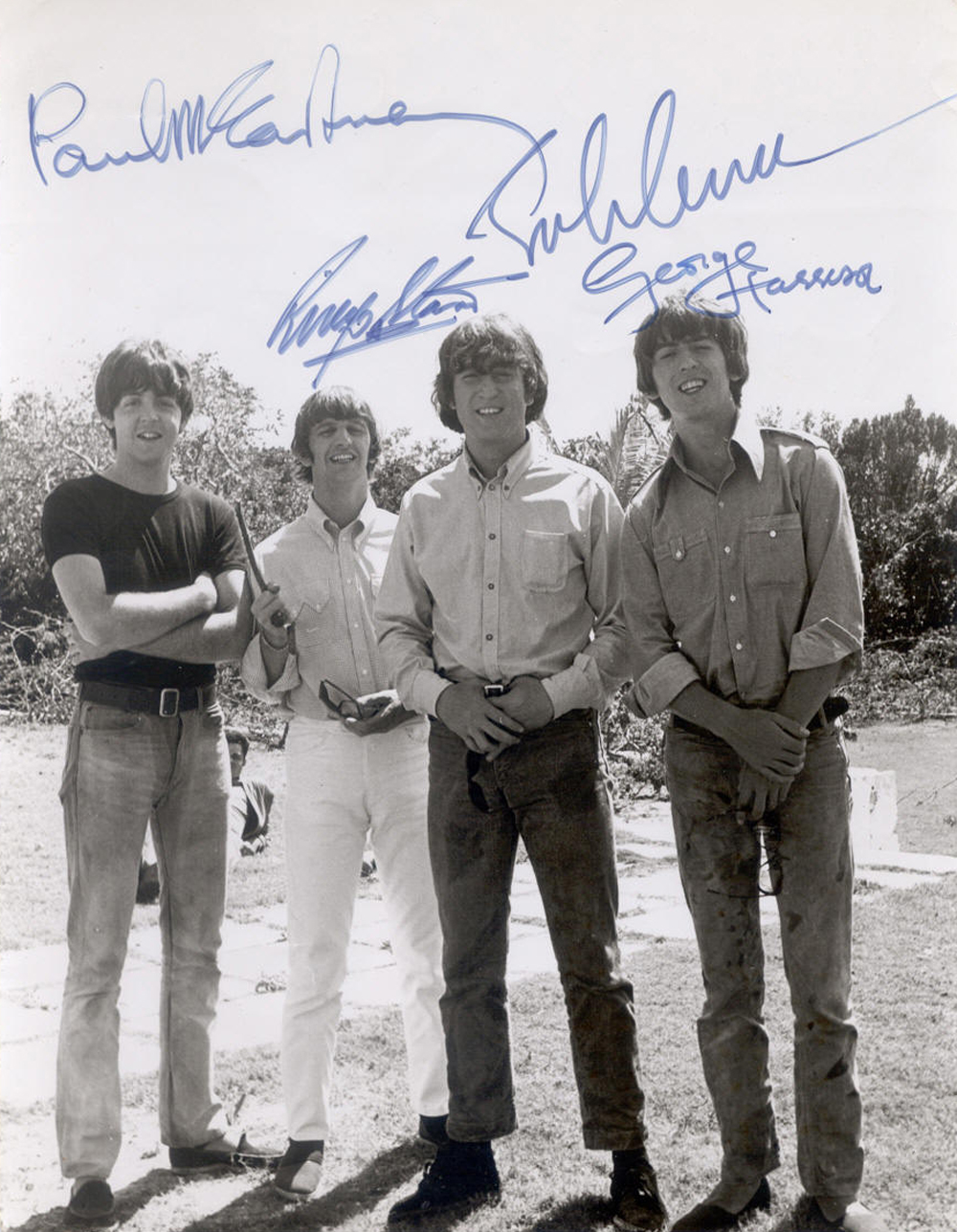
![]()
COUNTRY SUPERSTAR GEORGE JONES DEAD AT 81
 From current MCRFB news wire services:
From current MCRFB news wire services:
One of Country’s Greatest Died of Irregular Blood Pressure Today
NASHVILLE, Tenn. — George Jones, whose supple Texas voice conveyed heartbreak so profound that he became perhaps the most imitated singer in country music, died Friday at Vanderbilt University Medical Center in Nashville after being hospitalized with high fever and irregular blood pressure. He was 81.
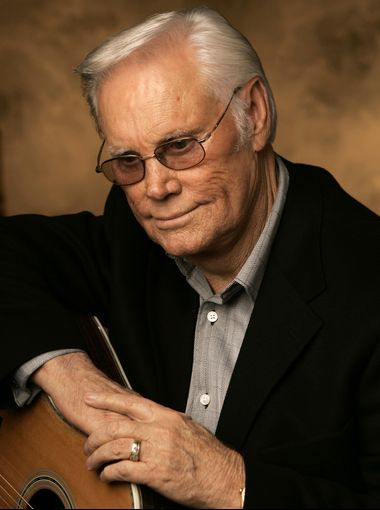
Hank Williams may have set country music’s mythology and Johnny Cash its attitude, but Jones gave the genre its ultimate voice. With recordings that spanned 50 years, including Number One singles “White Lightning,“ “She Thinks I Still Care” and “He Stopped Loving Her Today,“ Jones influenced generations of country singers and was considered by many to be the greatest of them all.
Jones’ life also included legendary battles with substance abuse, mostly alcohol, and four marriages, including one to fellow singer Tammy Wynette and another, his last and longest, to Nancy Sepulvado.
Ultimately, though, it was that voice that won Jones two Grammys, got him into the Country Music Hall of Fame and made him an American musical icon. That plaintive voice that seemed to break down at will and wallow in sorrow. That voice of honky-tonk eloquence that held tortured echoes of heroes like Williams, Roy Acuff and Lefty Frizzell. That finely nuanced voice that offered thrill rides of emotions, with twists and turns, slippery, bending notes and sudden drops.
Jones’ performances weren’t just an emotional rollercoaster, they were the whole theme park.
Born in a log cabin in the “Big Thicket” region of East Texas, Jones grew up idolizing Acuff and bluegrass great Bill Monroe. In his youth, he played on the streets of downtown Beaumont for tips. He met Williams at a local radio station in 1949, and the singer advised young Jones to stop singing like Acuff and start singing like himself.
By the time he began recording for Pappy Dailey’s Starday Records in 1954, Jones had married and divorced and served a stint with the Marines in Korea. He first hit the national country charts in 1955 – the same year that Elvis Presley and Johnny Cash made their chart debuts – with Why Baby Why, a honky-tonk record featuring a double-tracked vocal. Jones’ recording eventually was eclipsed by Webb Pierce and Red Sovine’s cover, which topped the charts, while his stalled at No. 2.
His first Number One came with “White Lightning,“ a moonshine novelty with an oddball, hiccupping hook. By this time, Jones already was a binge drinker and, according to his 1997 autobiography I Lived to Tell It All, he was heavily under the influence during the recording session and required 83 takes to get a usable version. White Lightning came out in March 1959, one month after its writer – J.P. Richardson, aka The Big Bopper – was killed in a plane crash along with Buddy Holly and Ritchie Valens.
The flat-topped singer placed multiple singles on the country charts each year during the ’60s – ballads like “The Window Up Above” and “If My Heart Had Windows”; “The Race Is On,“ with its rumbling, six-string bass solo; duets with Melba Montgomery and pop singer Gene Pitney. Occasionally, Jones topped the charts with “Tender Years,” “She Thinks I Still Care” and “Walk Through This World With Me.“
In 1969, Jones married Tammy Wynette – one of the most famous country music marriages ever, though it would last just six years. Jones followed Wynette to Epic Records and soon began working with her producer, Billy Sherrill, who would be responsible for his biggest hits of the ’70s and ’80s.
Jones and Wynette recorded a series of duet singles – including chart-toppers Golden Ring, Near You and We’re Gonna Hold On – that outlined a fictive version of the couple’s often-volatile relationship. The duets continued for several years after they divorced in 1975, and the two reunited professionally for a final album together, One, in 1995.
During the ’90s, Jones released an album, followed by an autobiography, called I Lived to Tell It All – the irony in the title coming precisely because so many people hadn’t expected him to.
His drinking and, eventually, his cocaine use, caused him to miss so many concerts that he earned the nickname No-Show Jones (he was also, more kindly, called The Possum).
He got in fights and destroyed motel rooms. He ventilated his tour bus by emptying the chambers of a pistol into its floor. He drove to a liquor store on a riding lawnmower when his second wife, Shirley Corley, hid all the car keys. At his most inebriated, he insisted on singing in the voice of a duck named Deedoodle.
Jones recounted multiple brushes with death in his book, but his best-known one came in 1999, when he crashed his Lexus SUV into a bridge abutment near Franklin, Tenn., while talking on his cellphone. Jones suffered a collapsed lung and ruptured liver and spent two weeks in a Nashville hospital.
Police found a partially empty bottle of vodka under the front passenger’s seat, and Jones later pled guilty to driving while impaired and acknowledged that he had fallen off the wagon.
Even at the height of his substance abuse, Jones’ personal troubles couldn’t always overshadow his talent.
His name has appeared on more charting singles – 168, spanning 55 years – than any other country singer’s, from 1955’s Why Baby Why to Aaron Lewis’ 2010 hit Country Boy, where he was a featured vocalist with Charlie Daniels.
He was a Kennedy Center honoree in 2008 and received a Grammy Lifetime Achievement Award in 2012.
Jones’ greatest artistic achievement came with Billy Sherrill, his regular producer for much of the 1970s and ’80s. Sherrill, an admirer of Phil Spector’s “Wall of Sound” musical architecture, constructed his own masterpieces using Jones’ voice as scaffolding. Instead of competing with the singer’s dramatic delivery, Sherrill complemented it with vocal choruses, theatrical string sections and tensile pedal steel guitar lines. Sherrill’s lavish productions didn’t bury Jones, they revealed previously unheard subtleties of expression.
The pair reached their peak with the 1980 release of He Stopped Loving Her Today, widely considered to be the greatest country record ever made and one that, according to many involved with its creation, took more than a year to get on tape because Jones was so wrecked by cocaine and bourbon.
“He said I’ll love you ’til I die/She told him you’ll forget in time,” Jones sang as he began the Bobby Braddock/Curly Putman tune, needing only three minutes and 15 seconds to convey a lifetime of emotional devastation, the kind that takes hold of a man and doesn’t let go, not ever.
He Stopped Loving Her Today revived Jones’ career and perhaps saved his life. It gave him his first number-one hit in five years and won four awards from the Country Music Association, including Song of the Year twice. It also gave him the first of his two Grammys – he won again in 2000 for the post-wreck Choices.
In his later years, Jones often complained about the directions contemporary country music took, especially after radio stopped playing his records. But younger stylists revered him, particularly during country’s commercial boom of the late ’80s and early ’90s. Several, including Garth Brooks, Alan Jackson and Vince Gill sang with him on 1992’s I Don’t Need Your Rockin’ Chair, released the same year Jones was inducted into the Country Music Hall of Fame. In the last 10 years of his career, he recorded with Shooter Jennings and Staind frontman Aaron Lewis, as well as with Dolly Parton and Merle Haggard.
Now, that voice has gone silent. They may lay a wreath upon his door. Soon, they’ll carry him away.
But we will not stop loving him today.
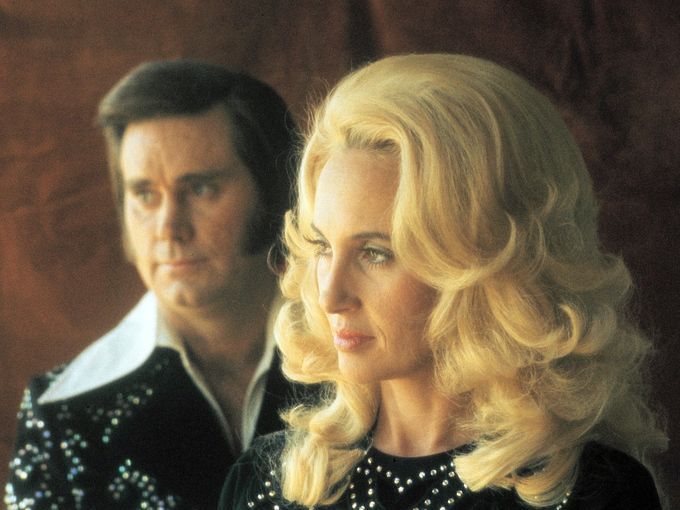
(Article originally published in the online edition of USA Today; Friday, April 26, 2013).
![]()
FLASHBACK THIS DATE: WKNR 13 FADES INTO HISTORY
(Above WKNR survey image property of Keener13.com. Courtesy Scott Westerman and keener13.com).
ON THIS DATE: LEGENDARY WKNR FADES OUT IN 1972. For more on closing the book on this storied Detroit radio chapter, MCRFB takes you back one year ago today with this story, April 25, 2012. (Above: the very first WKNR Music Guide issued; November 7, 1963)
WKNR-AM FLASHBACK: Keener all-nighter Bill Phillips (audio; 12/27/64) all smiles behind the microphone and the music on the No. 1 rated Top 40 radio station in Detroit, 1964.
![]()
WXYZ-AM 1270 * THE DETROIT SOUND SURVEY * APRIL 25, 1966
THE TOP 35 HITS ON WXYZ ON THIS DATE IN 1966
WXYZ 1270 Detroit Sound Survey; No. 02 issued April 25, 1966 under Lee Alan, Program Director; WXYZ
 (WXYZ 1270 Detroit Sound Survey for April 25, this date 1966; survey courtesy the Jim Heddle Collection. For the previous weekly WXYZ April 18, 1966 survey click here).
(WXYZ 1270 Detroit Sound Survey for April 25, this date 1966; survey courtesy the Jim Heddle Collection. For the previous weekly WXYZ April 18, 1966 survey click here).
![]()

